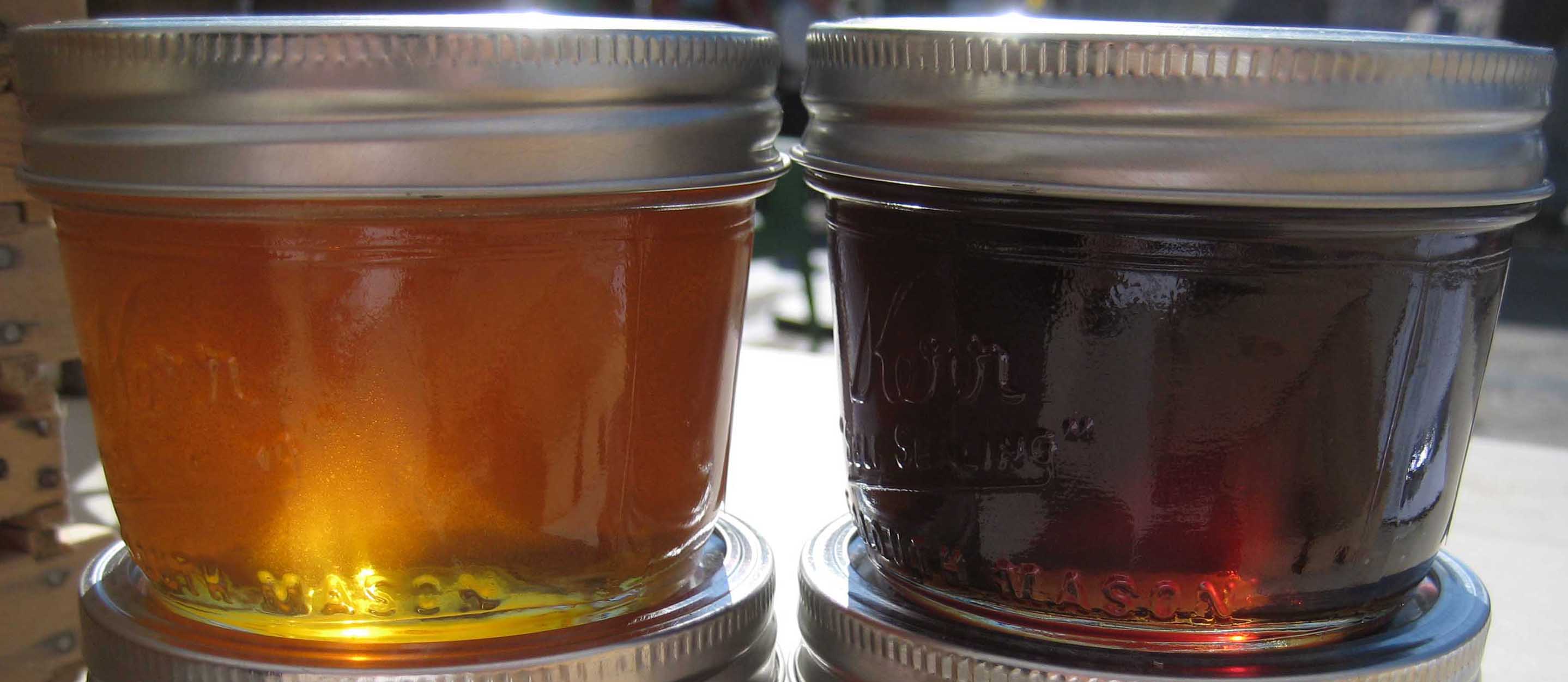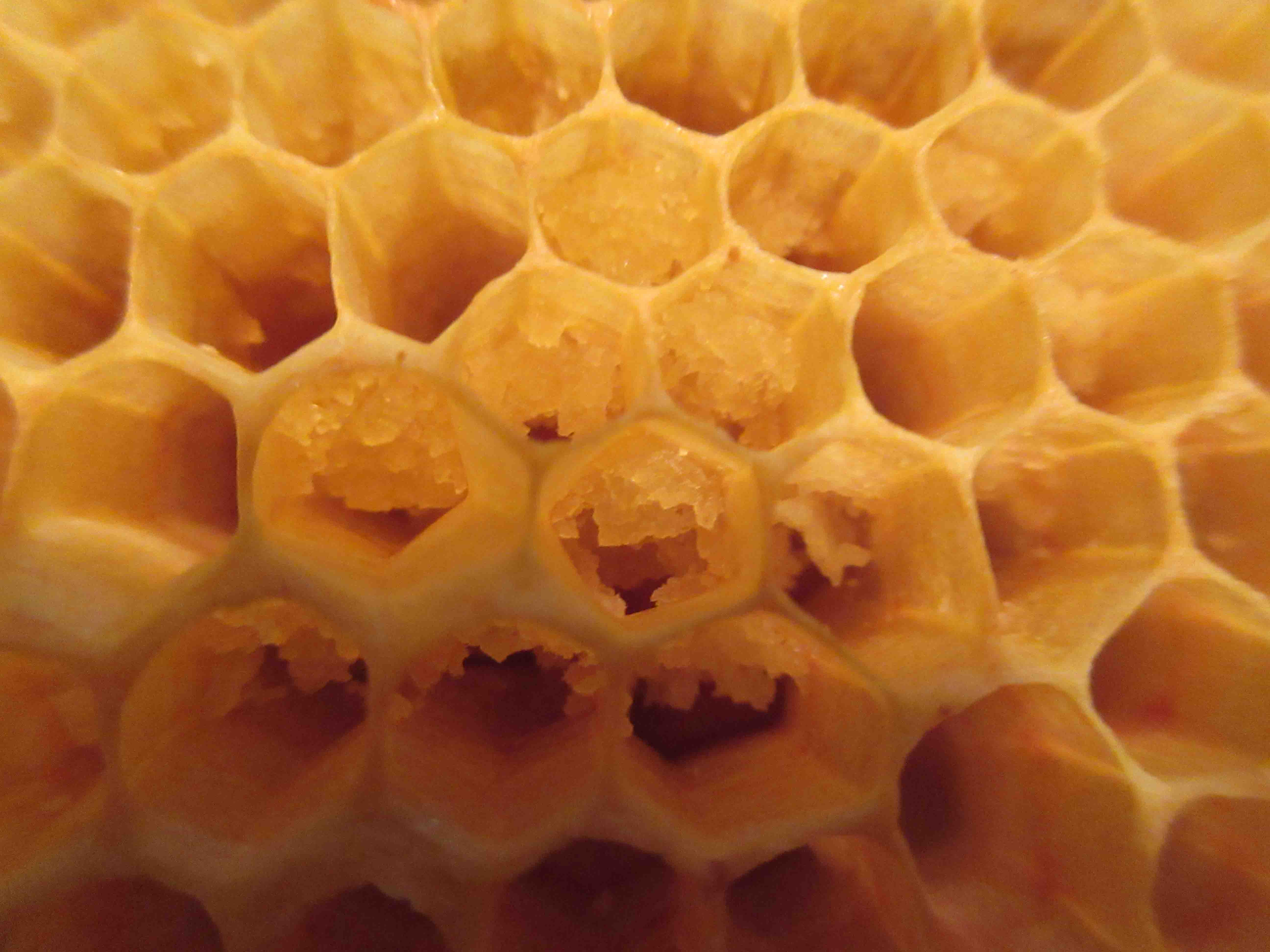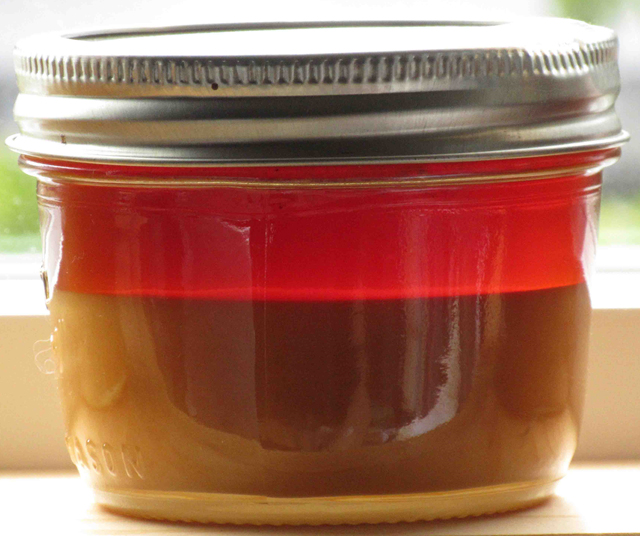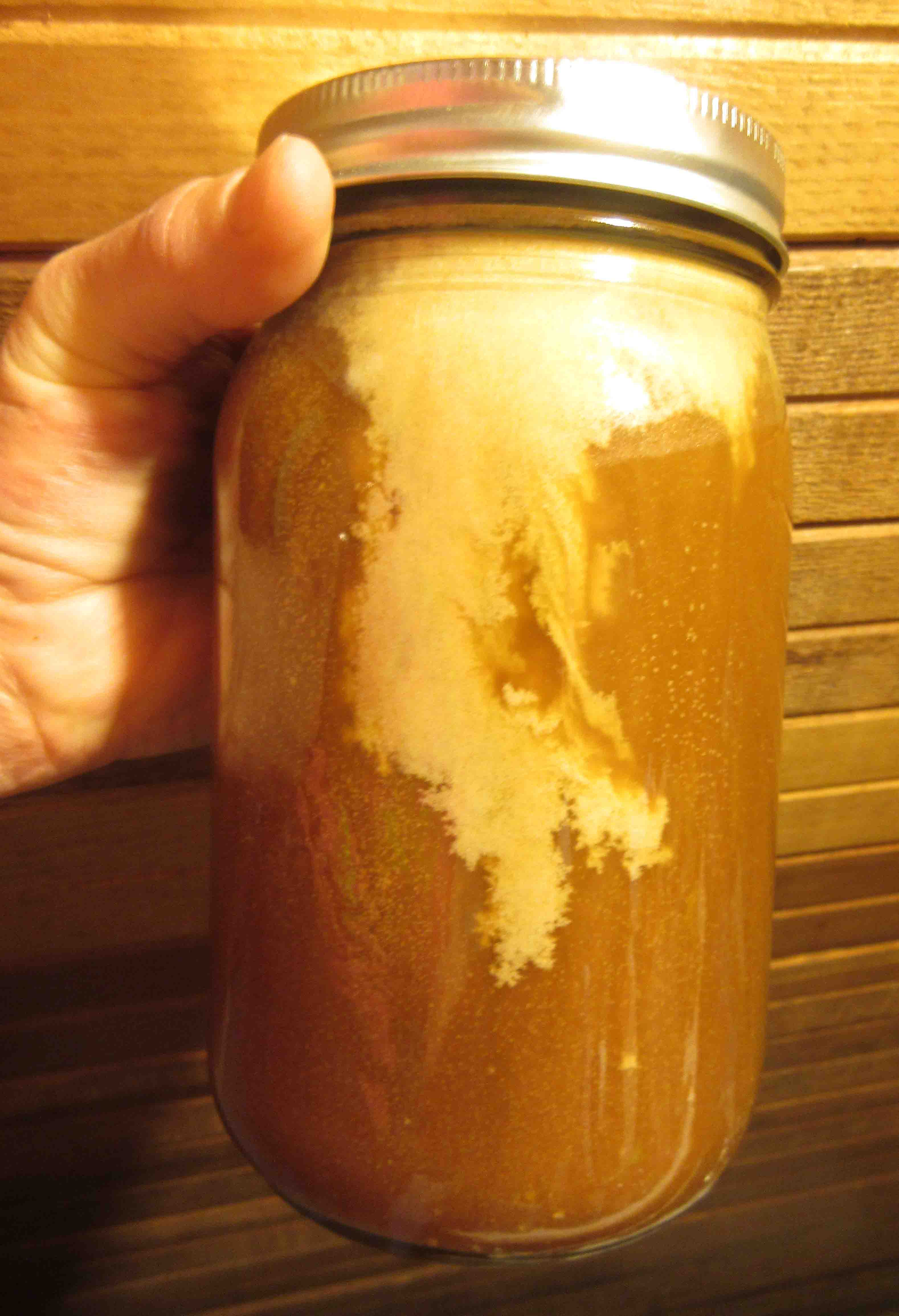This is the second half of a two-part article about honey. Click here to read how honey is made.
Honey is highly-refined flower nectar. Different flowers yield different amounts of nectar – some are generous, some have none at all. On average though, we can say that each flower generally produces less than half a milligram of nectar (80% of which is water).
 Different flower nectars have varying levels of glucose, fructose and sucrose as well as other trace elements. These characteristics show up in the honey as varieties in color, aroma and tendency towards crystallization, as can be seen in these two examples from the same colony.
Different flower nectars have varying levels of glucose, fructose and sucrose as well as other trace elements. These characteristics show up in the honey as varieties in color, aroma and tendency towards crystallization, as can be seen in these two examples from the same colony.
 Honey that is higher in glucose is more prone to crystallization. Those with a very high percentage of glucose will crystallize almost immediately after harvesting (such as honey from the nectar of brassicas). Some honeys, such as that made from the nectar of ivy flowers, will even crystallize in the honeycomb cell! Some nectars, like that from the tupelo tree, have a very low percentage of glucose, and may never crystallize. An important thing to note is that crystallization is a natural process, and indicative of pure honey. It doesn’t mean your honey has “gone bad.”
Honey that is higher in glucose is more prone to crystallization. Those with a very high percentage of glucose will crystallize almost immediately after harvesting (such as honey from the nectar of brassicas). Some honeys, such as that made from the nectar of ivy flowers, will even crystallize in the honeycomb cell! Some nectars, like that from the tupelo tree, have a very low percentage of glucose, and may never crystallize. An important thing to note is that crystallization is a natural process, and indicative of pure honey. It doesn’t mean your honey has “gone bad.”
 Sometimes though, crystallization can lead to fermentation. When honey crystallizes, the glucose comes out of suspension. This frees up some water that was tied up in the complex chemistry of the honey. This released water can raise the moisture content enough for the honey to begin to ferment. Sometimes when honey ferments, it will create a layered effect, with the crystallized honey below and the converted sugars above.
Sometimes though, crystallization can lead to fermentation. When honey crystallizes, the glucose comes out of suspension. This frees up some water that was tied up in the complex chemistry of the honey. This released water can raise the moisture content enough for the honey to begin to ferment. Sometimes when honey ferments, it will create a layered effect, with the crystallized honey below and the converted sugars above.
To avoid crystallization of your honey, try storing it in your freezer. The cold temperatures make the liquid more viscous, and the crystallization process is slowed. If you want to make crystallized honey liquid again, a warm-water bath is the best route to take. Avoid using the microwave and don’t place your jar of honey into an actively boiling pot. Repeated exposure to high temperatures can cause your honey to degrade.
 Fermentation can also occur if your honey isn’t stored in air-tight containers. Honey is naturally hygroscopic, meaning it will absorb moisture from its surroundings. (This is why it is so effective on wounds – it kills bacteria by dehydrating them.) One of the by-products of fermentation is the formation of carbon dioxide, which can form long feathery patterns such as in this knotweed honey or a foam-like film on the surface of your honey. I have used this altered honey without ill effect, but if left too long, fermentation and carbon dioxide can change the flavor of the honey.
Fermentation can also occur if your honey isn’t stored in air-tight containers. Honey is naturally hygroscopic, meaning it will absorb moisture from its surroundings. (This is why it is so effective on wounds – it kills bacteria by dehydrating them.) One of the by-products of fermentation is the formation of carbon dioxide, which can form long feathery patterns such as in this knotweed honey or a foam-like film on the surface of your honey. I have used this altered honey without ill effect, but if left too long, fermentation and carbon dioxide can change the flavor of the honey.
To avoid fermentation, keep your honey in well-sealed containers and store below 40-degrees F. Between 50 and 65-degrees is ideal for fermentation. Apparently, if you start to see streaks of hydrogen peroxide forming in your honey, warming it to melt the crystals will halt the fermentation process, because re-liquefying the glucose crystals will decrease the overall percentage of water, making the conditions inhospitable to yeast growth. Once re-heated however, be sure to use that honey up quickly.
Thanks for reading my short primer on honey. What other questions do you have about honey that were not answered in this article? (Submit your questions in the comments below.)